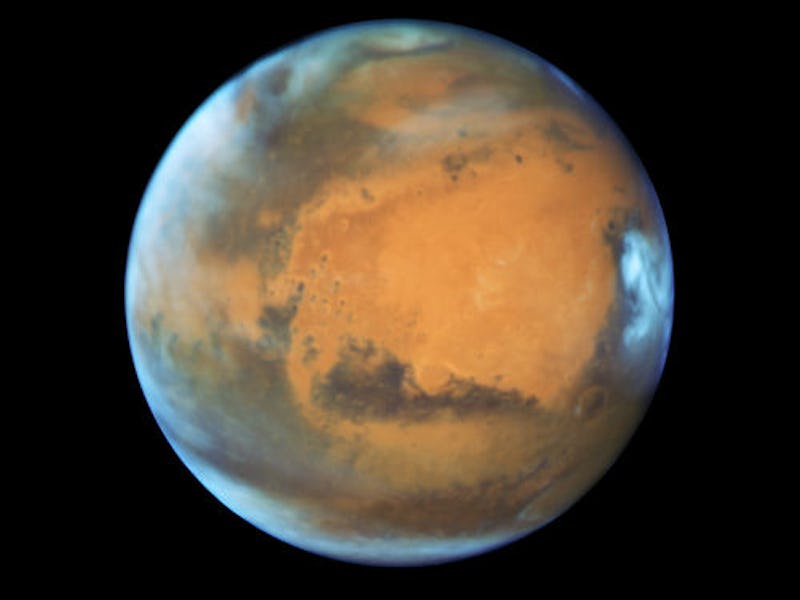2 incredible images of Mars show the aftermath of a terrifying landing
After its tense descent, HiRISE shows Perseverance just chilling on the surface of Mars.

It's been nearly two weeks since NASA's Perseverance rover landed on Mars, and the newest Mars robot seems to be getting accustomed to its new home.
The Mars Reconnaissance Orbiter beamed back a new image of Mars over Jezero Crater, showing the rover six days after it touched down on the Red Planet. It is currently conducting a system checks before officially begins its mission.
What to know: Perseverance landed on Mars on February 18 at 3:55 p.m. Eastern time after traveling through space for nearly seven months.
READ MORE PERSEVERANCE ROVER NEWS FROM INVERSE
During an intricate landing maneuver known as the "seven minutes of terror," the rover first deployed a parachute, then separated from its descent stage, all before its wheels touched the down on the surface of Mars.
The newest images: A little over a week after its landing, the satellite paparazzi captured this image of the rover, released on Monday.
Using the High Resolution Imaging Science Experiment (HiRISE) instrument onboard the Mars Reconnaissance Orbiter captured this orbital view six days after its infamous landing sequence.
Perseverance rover can be seen at the center of the image conducting its system checks.
Perseverance can be seen at the center conducting system checks with two bright beams to each of its sides that were cleared out by the descent stage rockets while the rest of the surface is covered by loose, dark material.
Prior views: This isn't the first overhead view of Perseverance. Engineers captured this image of the rover on the surface of Mars surrounded by all the parts of its descent not long after its successful landing.
This image of the Martian surface shows the rover on the landing site after it shed its parachute, descent stage and heat shield.
Perseverance is seen at the center of its landing site with a surrounding blast pattern that was created by the sky crane that lowered the rover onto the surface of Mars.
As it entered the Martian atmosphere, the Perseverance rover was encapsulated in an aeroshell with a heat shield to keep it from burning up during its descent. The heat shield was later discarded by the rover, and can be seen towards the right of the image.
After it entered the atmosphere, the spacecraft deployed a parachute about seven miles above the surface of Mars. The spacecraft soon separated from the parachute, which can be seen on the top left of the image, before being lowered from a sky crane descent stage onto the surface using a set of cables.
Once Perseverance's wheels touched the surface of Mars, it cut the cables and safely landed on the planet while the sky crane landed at a safe distance away from the rover to prevent damaging it. The descent stage can also be seen towards the right of the parachute.
"These foreign objects on the surface of Mars are highly visible now but will become dustier with time and slowly fade into the background over years," HiRISE co-investigator Shane Byrne wrote in a public post. "HiRISE will continue to image the Perseverance landing site to track the progress of the rover and changes in the other pieces of hardware that accompanied it."
The mission: Perseverance landed in the Jezero Crater — a 28-mile wide, 1,600-foot deep crater located in a basin slightly north of the Martian equator.
Jezero Crater once housed a lake estimated to have dried out 3.5 to 3.8 billion years ago, which makes it an ideal destination to hunt for ancient, microbial life that may have once existed on Mars.
The rover will soon begin its 687-day mission on Mars, the equivalent of one Martian year, packed with a unique set of tools aimed at finding signs of ancient microbial life on Mars.
This article was originally published on